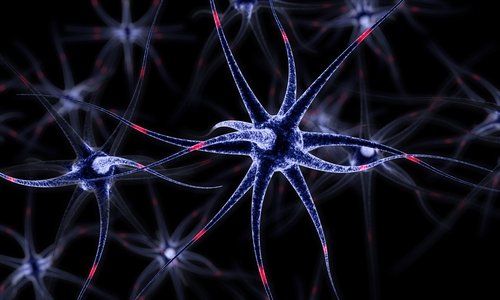Dysfunction of Astrocyte Brain Cells Plays Key Role in Huntington’s, Mouse Study Suggests

Impaired metabolism of a type of brain cell called an astrocyte plays an important role in the development and progression of Huntington’s disease, a study using a mouse model has found.
Discovery of this previously unknown error could be key in developing future treatments for Huntington’s, which does not yet have a cure.
The study, “Integrative Characterization of the R6/2 Mouse Model of Huntington’s Disease Reveals Dysfunctional Astrocyte Metabolism,” was published in the journal Cell Reports.
Huntington’s disease research has recently shifted from focusing solely on neurons to studying the role of other brain cells, including astrocytes — star-shaped cells that are present in large numbers in the brain and are responsible for regulating nerve cell communication and survival.
Astrocytes also provide metabolic support to neurons: Not only do they receive the neurotransmitter glutamate, they also provide neurons with a molecule necessary for its synthesis and for the synthesis of another neurotransmitter called gamma-aminobutyric acid (GABA).
“Researchers used to believe that hereditary diseases — including Huntington’s disease — were primarily a result of problems in the neurons. But here we show and confirm that the astrocytes also play a main role,” Niels Henning Skotte, PhD, the study’s first author, said in a press release.
The University of Copenhagen researchers analyzed how protein expression changed in four different brain regions — the striatum, cortex, hippocampus, and midbrain — of a Huntington’s mouse model that mimics several disease features, including movement disturbances, muscle wasting, and premature death.
They found that several proteins were altered across all four brain regions in Huntington’s mice compared with healthy mice. However, as in humans, most protein alterations were found in the striatum — an area of the brain that coordinates several aspects of cognition, including both motor and action planning, decision-making, motivation, reinforcement, and reward perception.
“More specifically, the individual brain regions striatum, cortex, hippocampus, and midbrain exhibited 905, 779, 385, and 114 protein changes, respectively, which clearly reflects the vulnerability of the brain regions to the presence of mutant HTT [huntington protein],” the researchers wrote in the study.
Several of the altered proteins were involved in energy metabolism, synapse function (communication between nerve cells), and adequate balance of different neurotransmitters.
A significant finding was the reduced exchange of glutamine between astrocytes and neurons. Glutamine is an essential amino acid used in the synthesis of several proteins and is a precursor to the neurotransmitter glutamate.
“Glutamine is produced in the astrocytes and transported to the neurons, where it is used to make neurotransmitters. They are central to the ability to send signals across the brain. If the transport of glutamine from the astrocytes is lost, the neurons stop functioning optimally,” Skotte said in the release.
Further studies looking at presymptomatic and early stages of the disease are required to assess how early in the disease astrocytes’ metabolism is impaired, the researchers noted.
These findings will also show whether therapeutic strategies that enhance astrocytes’ metabolism, mainly glutamine release, could alleviate the symptoms of Huntington’s disease.
“Even though Huntington’s disease is a genetic disease, our study shows a dysregulation of the proteins and the signalling pathways of these proteins. There is currently no cure for Huntington’s disease. But if we were able to find areas in which the effects of the disease may potentially be improved or reduced, it would be a big step in the right direction. This study may provide suggestions for focus areas of future research,” said Michael Lund Nielsen, the study’s lead author.






